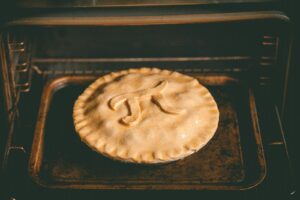Conjunctions are one of the most important parts of speech, but as part of the conjunction definition, they’re also one of the least understood. This post will define what a conjunction is, explain the different types, and show you how to use them in your writing. Are you ready to learn about these little-known grammar rules? Then keep reading!

What is a Conjunction Definition?
A conjunction is a word that connects other words, phrases, or clauses together. The most common conjunctions are and, but, or, so. These words are used to join two ideas together. For example, you could say “I’m going to the store, and then I’m going to the park.”
Conjunctions are also used to contrast two ideas. For example, you could say “The weatherman said it was going to rain today, but it’s sunny outside.” So, in short, conjunctions are words that help us connect thoughts and ideas together.
Types of Conjunctions
A conjunction is a word that connects two or more words, phrases, clauses, or sentences. The most common conjunctions are and, but, or, nor, for, yet, and so. There are also three types of conjunctions: coordinating conjunctions, subordinating conjunctions, and correlative conjunctions.
- Coordinating conjunctions connect words, phrases, or clauses of equal grammatical rank.
- Subordinating conjunctions connect subordinate clauses to main clauses.
- Correlative conjunctions come in pairs and are used to connect words, phrases, or clauses that are of equal grammatical rank.
Conjunctions are an essential part of speech because they help to create cohesive paragraphs and essays. When used effectively, they can also add style and sophistication to your writing. So don’t be afraid to use them!
Coordinating Conjunctions
A coordinating conjunction is a word that joins two or more items of equal grammatical importance. The most common coordinating conjunctions are “and,” “or,” and “but.” A mnemonic device for remembering the coordinating conjunctions is the acronym FANBOYS: for, and, nor, but, or, yet, so. As with all conjunctions, a comma almost always precedes a coordinating conjunction when it appears between two independent clauses.
Note that you can use a semicolon in place of a comma to join two independent clauses; however, doing so is generally considered more formal than using a comma. You can also use a semicolon in place of a comma to join items in a list when at least one of the items already contains commas.
Either way, don’t use a semicolon in place of a comma unless you’re confident in your ability to do so correctly. If you’re not sure whether to use a comma or semicolon, it’s usually best to err on the side of using a comma; using too many commas is generally considered less harmful than omitting necessary commas.
Subordinating Conjunctions
Subordinating conjunctions are little words that have a big job. They join an independent clause (the main clause) with a dependent clause (the subordinate clause). The subordinate clause provides some essential information about the main clause, but it can’t stand alone as a sentence.
- Take this example: “I’m glad that you’re happy.”
The main clause is “I’m glad,” and the subordinate clause is “that you’re happy.” The subordinating conjunction in this sentence is “that.” Other common subordinating conjunctions include “after,” “although,” “as,” “because,” “before,” “how,” “if,” “once,” “since,” and “until.”
As you can see, subordinating conjunctions are versatile words that can be used in many different ways. When used correctly, they can add depth and complexity to your writing. So don’t be afraid to experiment with them!
Correlative Conjunctions
When two things happen at the same time, we use a correlative conjunction to link them. The most common correlative conjunctions are ‘either…or’, ‘neither…nor’, and ‘not only…but also’.
- For example, you might say, “I’m either going to the party or staying home.”
This means that you can’t do both – you have to choose one or the other. Or you might say, “We’re going to need both a bigger house and a bigger car.” This means that you need two things – you can’t have just one. Correlative conjunctions are a great way to combine two ideas into one sentence.
Using conjunctions correctly is an important part of being a good writer. Being able to recognize and use different types of conjunctions, like coordinating and correlative conjunctions, will help you write more effective sentences. With practice, you’ll be able to use these tools confidently in your writing.
Examples of Conjunctions in Sentences
A Conjunction is a word that connects words or groups of words. The most common conjunctions are ‘and’, ‘or’, and ‘but’. Conjunctions are used to join two simple sentences into one complex sentence.
- For example, “I am studying English” and “I am learning grammar” can be joined to make the complex sentence “I am studying English and learning grammar”.
Other examples of conjunctions include: so, because, yet, nor.
When a conjunction is used to connect two independent clauses, it is called a Coordinating Conjunction. A conjunction can also be used to connect words within a Dependent Clause. In this case, it is called a Subordinating Conjunction.
- Some examples of subordinating conjunctions include: after, although, as, as if, as long as, as soon as, before, even though, if, in order that, once, provided that, since, than, though, unless until , when ,whenever , where ,wherever , whether , which , while .
The following are examples of sentences containing coordinating and subordinating conjunctions:
- I’m studying English and learning grammar. (Coordinating Conjunction)
- Even though I’m failing math, I’m still going to study hard for the final exam. (Subordinating Conjunction)
- We could go to the movies or we could stay home and watch TV. (Coordinating Conjunction)
- Unless you study for the test, you will fail. (Subordinating Conjunction)
As you can see from these examples, conjunctions can be very useful in forming complex sentences. So next time you’re writing a paper or giving a presentation, be sure to use them correctly!
Conclusion
Conjunctions are an important part of the English language, and you should know how to use them properly in your sentences. There are three types of conjunctions: coordinating, subordinating, and correlative. Coordinating conjunctions join two independent clauses, while subordinating conjunctions join a dependent clause to an independent clause. Correlative conjunctions are pairs of conjunctions that work together. Conjunctions can be used in many different ways, so it’s important to understand their functions.
FAQs
What is a Coordinating Conjunction?
A coordinating conjunction is a word that joins two independent clauses. The most common coordinators are and, but, for, nor, and so. When you join two independent clauses with a coordinator, the meaning of the sentence doesn’t change. Here’s an example:
- I wanted to go for a walk, and my dog wanted to go for a walk too.
- The meaning of this sentence is the same as if you had written:
- I wanted to go for a walk, but my dog didn’t want to go for a walk.
What is a Subordinating Conjunction?
A subordinating conjunction is a word used to join a dependent clause to an independent clause. It’s used to show the relationship between these two parts of the sentence. Some examples of subordinating conjunctions are after, although, because, if, since, and until.
- Here’s an example: I didn’t go for a walk because it was raining.
In this sentence, “because it was raining” is the dependent clause and “I didn’t go for a walk” is the independent clause. The subordinate conjunction here (because) indicates that the reason I didn’t go for a walk is because it was raining.
What are Correlative Conjunctions?
Correlative conjunctions are pairs of conjunctions that work together. Examples of correlative conjunctions include either/or, neither/nor, both/and, and not only/but also.
- Here’s an example: I want to go for a walk either in the morning or in the evening.
In this sentence, “either…or” is the correlative conjunction and it indicates that I’m giving two different options – either in the morning or in the evening.
What is the Proper Way to use Conjunctions?
The proper way to use conjunctions depends on what type of conjunction you’re using and how you want to convey your message. When using coordinating and subordinating conjunctions, be sure to add a comma before the conjunction. Correlative conjunctions should generally be used together in a pair (e.g., either/or). Also, try not to use too many conjunctions in one sentence as this can make it difficult for the reader to understand your message.





